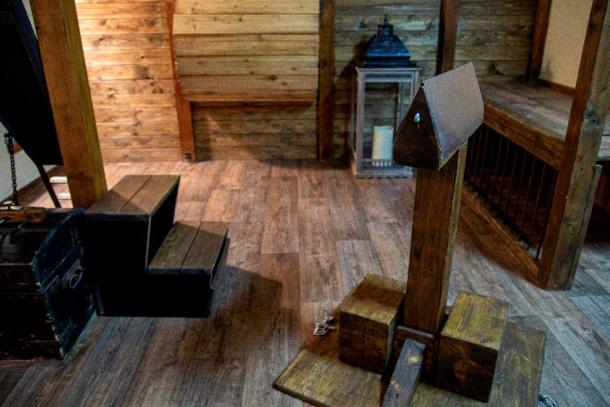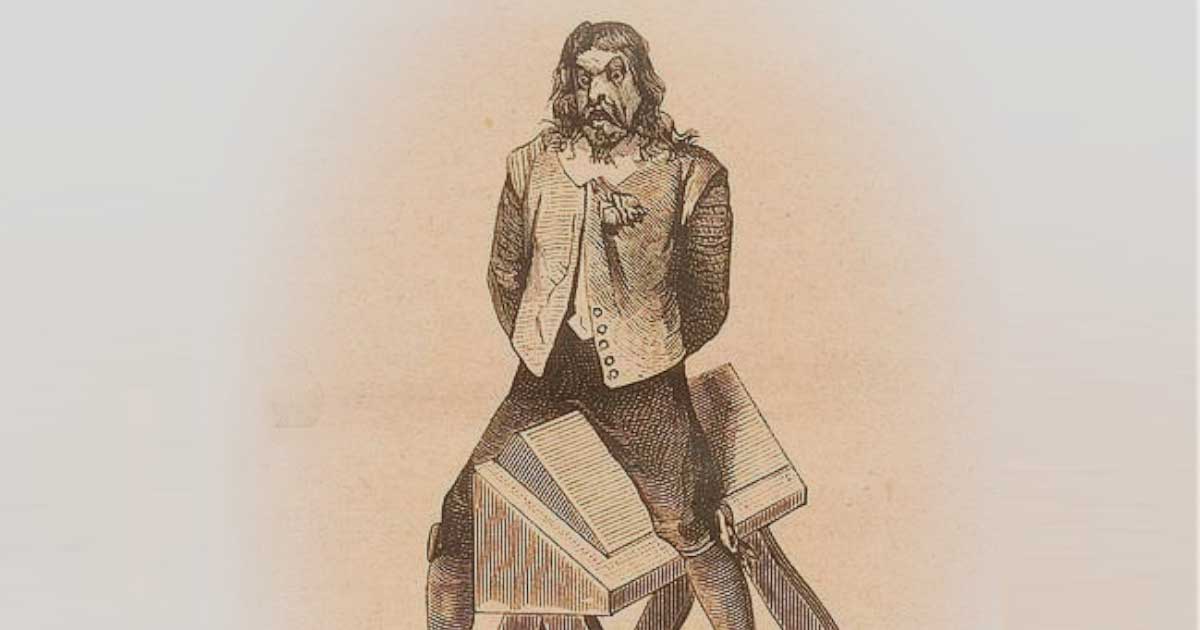The Spanish Donkey: Medieval History’s Most Horrific Torture Method
Throughout history, two things have remained constant. First, the intermingling of cultures has produced countless local variations of original ideas, be it cuisine, or language, or fashion. Second, human history is an unending tale of brutality and heinous torture, with most places in Europe celebrating the public dismembering of “apparently” unsociable members of society in the Middle Ages. Human society has seemed to enjoy the visual spectacle of the pain and suffering experienced by other human beings since time immemorial. And many will claim that the most horrible medieval torture device of all time was the Spanish Donkey or the Wooden Horse.
What Was the Wooden Horse Torture Device?
The Wooden Horse, chevalet, or Spanish Donkey was an extremely painful and horrific medieval torture device. It was first used by the Holy Inquisition in France and then in Spain and Germany, and then it migrated to the Americas, gaining prominence there during the colonial period. The principle design was the same wherever it was used. It was a triangular wooden box with a very sharp top end (i.e., where the horse’s spine would be).
The appliance was constructed of wood, with planks nailed together to form an elongated sharp ridge, which would serve as the horse’s back. These were supported by four legs fixed to a stand, some 6 or 7 feet (1.8-2.1 meters) high, with wheels fitted to the bottom of the legs so the entire device could be rolled across the floor or ground. A head and tail would be attached to make the torture device look like a huge almost “fun” wooden horse.
The offender would be mounted upon the horse, with weights on their ankles, and their hands tied behind their back. They were expected to maintain this position for hours, sometimes days.
- Deformed Medieval Man Found Broken By the Wheel of Torture
- Medieval Torture: The Terrifying Threat of Twisting off Limbs and Burning Flesh
Variants of the Spanish Donkey were used from the Middle Ages (it was allegedly invented by the Holy Inquisition in 12th-century France), all the way to the American Civil War period of the 1860s. It was also a torture device favored by the early Jesuits. Even one of the US’s Founding Fathers, Paul Revere, has been documented as using this torture device. The Spanish army’s frequent use of the device was documented into the 1800s.
On the Wooden Horse, with the chains applied, the victim’s or prisoner’s full weight was on their vulva or pelvis. Ankle weights were added to either side to make the skin tear apart. Severe pain would be caused to the victim in their crotch and bottom area, but if the punishment was intended to be even more brutal, the victim would be split into two halves. This made the Wooden Horse one of the most brutal torture devices in history, ever (and that’s saying something!).
In his monumental work, Torture and Democracy, Professor Darius Rejali writes that “The Wooden Horse was a large trestle with a sharp ridge or angle eight or nine feet long. Sometimes it was customary to add wheels, a wooden horse’s head, and a tail. The handcuffed prisoner straddled the ridge that dug into the cleft between his legs. Guards tied muskets to the legs to strain the thighs, or “as was jocularly said, [to keep] their horse from kicking them off.” It was reserved for infantry men, since these soldiers were unaccustomed to riding horses.”

This is the German medieval version of the Wooden Horse torture device, which was used in public spaces. (Ingo2802 / CC BY-SA 3.0)
The English and the Dutch Settlers Loved The Wooden Horse!
This torture method made its way to the Americas, practiced by the English and Dutch who’d settled there. There was a 12-foot (3.7-meter) high public Wooden Horse in downtown New York, with a sharpened upper edge to maximize pain. It was described as “a straight, narrow, horizontal pole, standing twelve feet high.”
There is an account of Paul Revere ordering two soldiers in the Continental Army to be punished with the Wooden Horse in 1776. Their crime? Playing cards on the Sabbath. They “rode the Wooden Horse for a quarter of an hour with a musket on each foot.” The variant in the United States also had metal spikes embedded on the sides of the device, vastly expanding the scope of the torture inflicted.
- 9 Methods of Ancient Punishment That’ll Make You Squirm
- Victims of Arrogance and Cruelty: The Pendle Witch Trials of 1612
Another variant emerged during the colonial period, called “riding the rail,” wherein the offender was forced to mount a fence rail. The fence rail would be carried around town, adding further shame. Sometimes, to make the spectacle even more humiliating for the offender, they would be tickled with feathers. Over time, minor infractions like drunkenness, brawling, and cursing were punished too, and a host of other offences were added to the fray.
The punishment method was borne out of a desire to punish those considered to be deviant Christians: those lacking faith, those lacking the will to practice, or those who were considered horrible members of the faith. It started off with making the ill-believer sit naked on the pointed contraption for as long as they could. The Jesuits, whose track record of and for violence is well documented, were the ones who are first reported with bringing the torture method across the Atlantic to modern-day Canada in 1646!

The Spanish Donkey or Wooden Horse Source: eremit08 / Adobe Stock
How the Wooden Horse Permanently Mangled Victims
Sometimes victims would sit for days until they broke from exhaustion or were on the verge of being permanently disabled. Once punished by the Wooden Horse, one could never walk the same way ever again with a guarantee of genital damage, a ruptured perineum, and a broken sacrum (a large triangular bone at the bottom of the spine). Mangled genitals were very common, including ruptured scrotums that were completely split open.
To increase the damage done to a victim’s body, they would be repeatedly tickled with weights attached to their feet. Most would just bleed to death on the donkeys, and survivors would die of infections later, or be permanently crippled. Women who were subjected to this would lose the ability to bear children!
This is an account of the utilization of the cruel device during the American Civil War, which gives us an indication of how cruel this device was. “The legs were nailed to the scantling so one of the sharp edges was turned up, which made it very painful and uncomfortable to the poor fellow especially when he had to be ridden bareback, sometimes with heavy weights fastened to his feet and sometimes with a large beef bone in his hand.”
“This performance was carried on under the eyes of a guard with a loaded gun and was kept up for several days; each ride lasting two hours each day unless the fellow fainted and fell off from pain and exhaustion. Very few were able to walk after this hellish Yankee torture but had to be supported to their barracks.”
- The Iron Maiden: This Medieval Torture Device Was Used as Recently as 2003!
- English Nursery Rhymes with Unexpected and Sometimes Disturbing Historical Origins
Today, the Spanish Donkey or Wooden Horse is completely inappropriate for democratic, civil societies. Indeed, there are various conventions and treaties that the global community has signed that prohibits the use of torture against prisoners and criminals. While these treaties and conventions are flouted frequently, what is undeniable is that something as brutal as the Spanish Donkey has disappeared from the lexicon. Today’s generations may never have any idea just how cruel their ancestors were.
Top image: An illustration of a torture horse of the Spanish Donkey or Wooden Horse variety. (Public domain)
By Sahir Pandey
References
Kleyman, K. 2022. Horrible Torture Methods That Have Been Used Primarily on Women. Available at: https://www.ranker.com/list/torture-used-on-women-in-history/katia-kleyman.
Margaritoff, M. 2022. The Brutal History Of The Spanish Donkey, The Medieval Torture Device That Left Victims With Mangled Genitalia. Available at: https://allthatsinteresting.com/spanish-donkey.
Rejali, D. 2007. Torture and Democracy. Princeton University Press.
Schenawolf, H. 2019. Riding the Wooden Horse & Other Medieval Tortures Adopted by Washington’s Army During the American Revolution. Available at: https://www.revolutionarywarjournal.com/riding-the-wooden-horse-other-medieval-tortures-adopted-by-washingtons-army-during-the-american-revolution/.


















Comments
Not likely true that Christians would torture people, but maybe their enemies would, and the world is unfortunately inflicted with sick deviants and tyrants who are turned on by it.
Nobody gets paid to tell the truth.